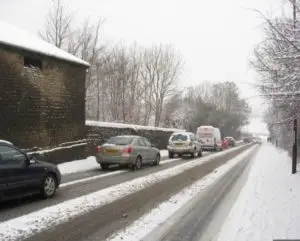PPF For Cars-Protect Against Chips and Scratches
PPF protects your car against rock chips, scratches, and environmental hazards. It can prevent you from having to pay for a full repainting job.
It’s usually applied by a professional car detailer, and it can take up to two days to fully cover a vehicle. It’s a labor-intensive process and requires a dust-free environment.
Protection from UV rays
PPF protects the paint and window tint from harmful UV rays that cause fading over time. It’s a great investment for those who plan on keeping their car for the long-term. It will save you from a lot of money and hassle.
It also prevents your car from fading and rusting over time, protecting its interior as well. The film has a clear coating that blocks the sun’s UV rays from penetrating your vehicle’s paint and window tint.
Most brands of ppf, including XPEL, include a self-healing feature that fixes the scratches that happen to your car’s paint. These scratches will disappear when the film gets heated by your engine, the sun or warm water.
LLumar’s self-healing features aren’t as quick as XPEL, but it does the job. It’s also not as widely available, so finding an XPEL authorized installer like Alta Mere in Plano, Texas might feel like an automotive treasure hunt. Its yellowing resistance, however, is a major selling point.
Protection from rain and snow
PPF protects the paint of your car from environmental hazards, including insect stains, gravel and road debris. It also prevents scratches and abrasions. If a scratch occurs, the PPF film can be heated to repair it, without the need for sanding or repainting. This helps keep your vehicle looking newer and shinier for longer, and helps maintain the resale value of the vehicle.
Choosing the right type of PPF is crucial to your vehicle’s protection. Different brands offer different grades of the product. Some are crystal clear, while others add color to the surface. Some are more durable than others, and can be backed by a warranty.
Typically, ppf for cars is applied to the rocker panels located along the lower side of your vehicle’s body. However, it can be used to protect the front bumper, hood, and mirrors as well. It is important to choose a reputable installer for PPF installation. Professionals have the tools and expertise needed to provide a high-quality installation that lasts.
Protection from stone chips
PPF protects your car from environmental hazards that can damage the paint surface and decrease its resale value. These include scratches, rock chips, chemical stains, and other road debris. It also minimizes harmful UV rays, which can cause the colors and shine of your vehicle to fade over time. PPF is a highly durable and long-lasting product that can last for years. The cost of installing it varies depending on the size of your vehicle and the type of film used. It can also depend on the reputation of the installer.
Unlike wax or sealants, which require frequent reapplications, PPF provides permanent protection that lasts up to 10 years. The film is composed of a transparent layer of thermoplastic urethane that resists scratching and dents. It flexes when impacted by debris or a stone chip, absorbing most of the impact and spreading it out over a larger area. The urethane also has self-healing properties that allow minor scratches and swirl marks to disappear when exposed to heat or sunlight.
Protection from rust
PPF protects the areas of your car that are most vulnerable to rock chips, scratches and environmental hazards. It is a strong adhesive film that helps to protect the paint and prevents damage to your vehicle’s finish, as well as the underlying body panels. It also makes it easier to clean the car, meaning that it is a great option for those who want to keep their cars looking pristine and in good condition.
While older versions of this protective film deteriorated over time in bright climates, the latest products are highly durable and offer self-healing properties. This means that minor scratches and swirl marks disappear when the film is heated by heat from sunlight or your engine.
There are different types of films available, so you can select the thickness that suits your driving style and use case. For example, a city commuter may opt for a 5mil thick coating, while a Bronco that off-roads often would choose a 10mil film to combat branch scratches and dirt damage.


One Response